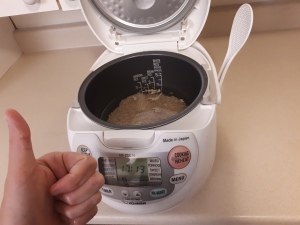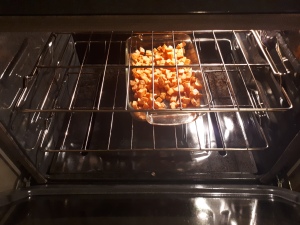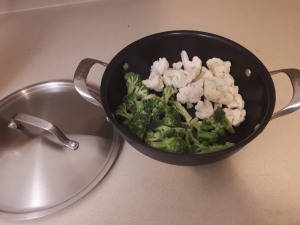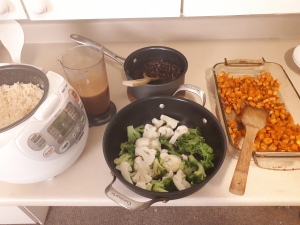As a follow-up to my previous blog post, where I expressed interest in learning more about plant-based diets, here we have another post where I’ll be exploring just that.
So, what is a plant-based diet, anyways? According to BBC Good Food, a plant-based diet is any diet that focuses around foods based on plant sources. This includes fruits, vegetables, grains, pulses, legumes, nuts, and meat substitutes such as soy products.
Some people on a plant-based diet still may include animal products, depending on how strict of a diet they follow. People who eat mostly plant-based but occasionally still consume meat, dairy, and eggs can be called flexitarian. Those who don’t eat meat, but who eat fish are called pescatarian. People who consume dairy and eggs, but not other animal products, are what most people recognize as vegetarian, though the true term is ovo-lacto vegetarian. Lastly, we have vegans, who don’t consume any animal products at all. No meat, fish, eggs, dairy, honey, or gelatin. Yes, gelatin is an animal product. There are a lot of vegan alternatives to gelatin nowadays, such as agar agar, which are increasingly available in grocery stores.
Are there any health benefits of following a plant-based diet? Unsurprisingly, yes. Compared to the standard North American diet, which is high in animal-based products, a plant-based diet has many health benefits, provided you follow a few key rules:
- Keep the plant-based foods simple. Highly processed foods of any kind are generally unhealthy.
- Make sure you replace any nutrients you may be removing from your diet by reducing consumption of animal products (calcium, iron, protein, etc.), with a plant-based alternative.
- Have a balanced, varied diet.
Anyways, on to the health benefits!
According to BBC Nutritionist Kerry Torrens, a properly balanced plant-based diet can result in lower cholesterol, reduced risks for type 2 diabetes, and heart disease, and even protection from some cancers, such as prostate and breast cancer.
Plant-based diets have become more and more popular over the past few years, leading to an abundance of vegetarian and vegan restaurants in the city. Even restaurants that don’t specialize in plant-based foods will generally have multiple options for the vegetarian and vegan customer. If you’re lucky, it won’t even be a salad!
Personally, if I ever own or manage a bakery or café, I definitely see myself incorporating plant-based foods in the menu. Partially due to a lower environmental impact and health benefits, but also due to the fact that plant-based foods are significantly less expensive. Ingredients like butter, cream, and meat are the most expensive ingredients purchased in bakeries and restaurants. Reducing the amount of animal-based products ordered can lower food costs significantly, which is always a plus in the mind of a business owner!
So, in order to prove my interest in plant-based foods, I’m going to make one of my favourite vegan recipes – a Vegan Rice Bowl. This is a medley of vegetables served on top of a bed of brown rice, topped off with a delicious tahini-balsamic dressing. If I’m feeling a little short on fibre or lethargic because of high-fat foods, this is a go-to for me.
This recipe is Gluten-free, Nut-free, Dairy-free, and Vegan!
Prep Time: 1 hour, largely inactive.
Ingredients:
- 3 sweet potatoes, peeled and cut into 1 cm cubes.
- 1 tbsp olive oil.
- 2 tsp Za’atar (Middle Eastern blend of herbs and sesame seeds), or other herbs.
- 1 small head of broccoli, cut into florets.
- 1 small head of cauliflower, cut into florets.
- Juice of 1/2 a lemon.
- 2 tbsp water.
- 2 cups brown rice, rinsed.
- 1 can black beans, drained and rinsed.
- Salt and pepper, to taste.
For the dressing:
- 1/3 cup soy sauce.
- 1/3 cup apple cider or balsamic vinegar.
- 2 tbsp tahini.
- 2 cloves garlic, roughly chopped.
- splash of hot sauce.
- pinch of black pepper.
- 1 cup vegetable oil (olive or canola oil work well).
Cooking Instructions:
For the dressing:
Add the soy, vinegar, tahini, garlic, hot sauce, and vinegar to a blender/food processor. If you have an immersion blender, use the beaker that came with it. Blend the dressing, slowly dribbling in the oil. Alternatively, mince the garlic very finely, and then just mix it all together in a bowl with a fork. Depends on how much effort you want to expend. Taste the dressing and adjust the seasoning to your preference. I like to add a little extra hot sauce a lot of the time!


I use a rice cooker, since it always makes perfect rice with very little effort. To season the rice, I like to add a tiny splash of oil and a pinch of salt to the water used to cook the rice. Now, time to prep everything else.

Toss your sweet potatoes with some olive oil, salt, pepper, and the Za’atar. Pop them in an oven at 400 F/190 C for approx 30 minutes, until they’re crispy on the outside and soft on the inside.


This next step is optional, but I like to boil canned beans for a little while. I find it makes them more tender and easier to digest. Heat a small pot of water to the boil and add in the beans. Simmer for 15-20 minutes, until they reach the desired level of tenderness.

I used frozen broccoli and cauliflower florets, since the whole heads at my local grocery store were in pretty bad shape. This wound up saving me some time washing and chopping them, which was an unexpected bonus!

When the sweet potatoes have about 10 minutes left in the oven, heat a lidded frying pan over medium heat with a splash of oil in the bottom. When the oil is hot, add your broccoli and cauliflower. Cook, covered, for a couple minutes, then add your lemon juice and water. Stir every so often, keeping the lid on the pan, so that the vegetables get a chance to steam. When they become tender, season lightly with salt and pepper, then take them off the heat.

Stir the black beans into the rice mixture, then serve with the rice on the bottom, then the broccoli and cauliflower, and top with the sweet potato. Add as much or as little dressing as you like!


One excuse you might see when people are explaining why they don’t do plant based meals is that the ingredients are hard to find or overpriced. While that may be true if you are using meat substitutes or other specialty ingredients, I purposely choose easy to find, relatively inexpensive ingredients when cooking plant-based meals.
While I didn’t learn anything new while making this dish (as it’s a go-to meal for me), I still enjoy using plant-based foods to get a nice umami flavour, something that usually comes from animal products. Balancing the flavours in the dressing can be a little tricky – certain brands of soy sauce are very salty, whereas others have a very strong soy flavour, so I always taste as I go along to make sure it has the right flavour profile.



